Scala: Currying functions
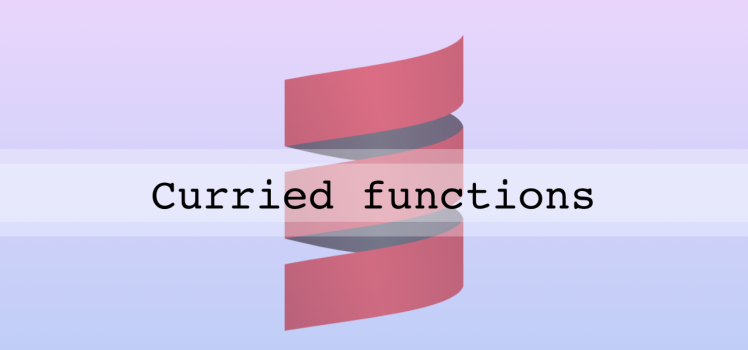
For a long time I couldn’t understand currying functions in Scala and how they work. That was really horrible! Because occasionally I met the currying functions in the code and wasted too much time to read them. So finally I decided to learn how it works and where could be applied.
Let’s start from a definition. A currying function is a function which could accept less number of parameters which are declared, then it returns a function with not used parameters. This definition is totally weird. In order to understand it we need to go through several examples. And be sure that you have already knows how simple Scala functions work.
Before currying
The most efficient way to understand the currying is to work with higher-order functions. Let’s look at following code snippet:
def concatenator(w1: String): String => String = w2 => w1 +" "+ w2
What’s going on in the string above? Well, there is declared concatenator function. It accepts w1 argument of String type. It returns another function of String => String type. Moreover the returning function has its own body w2 => w1 +" "+ w2.
Now we can see how it works:
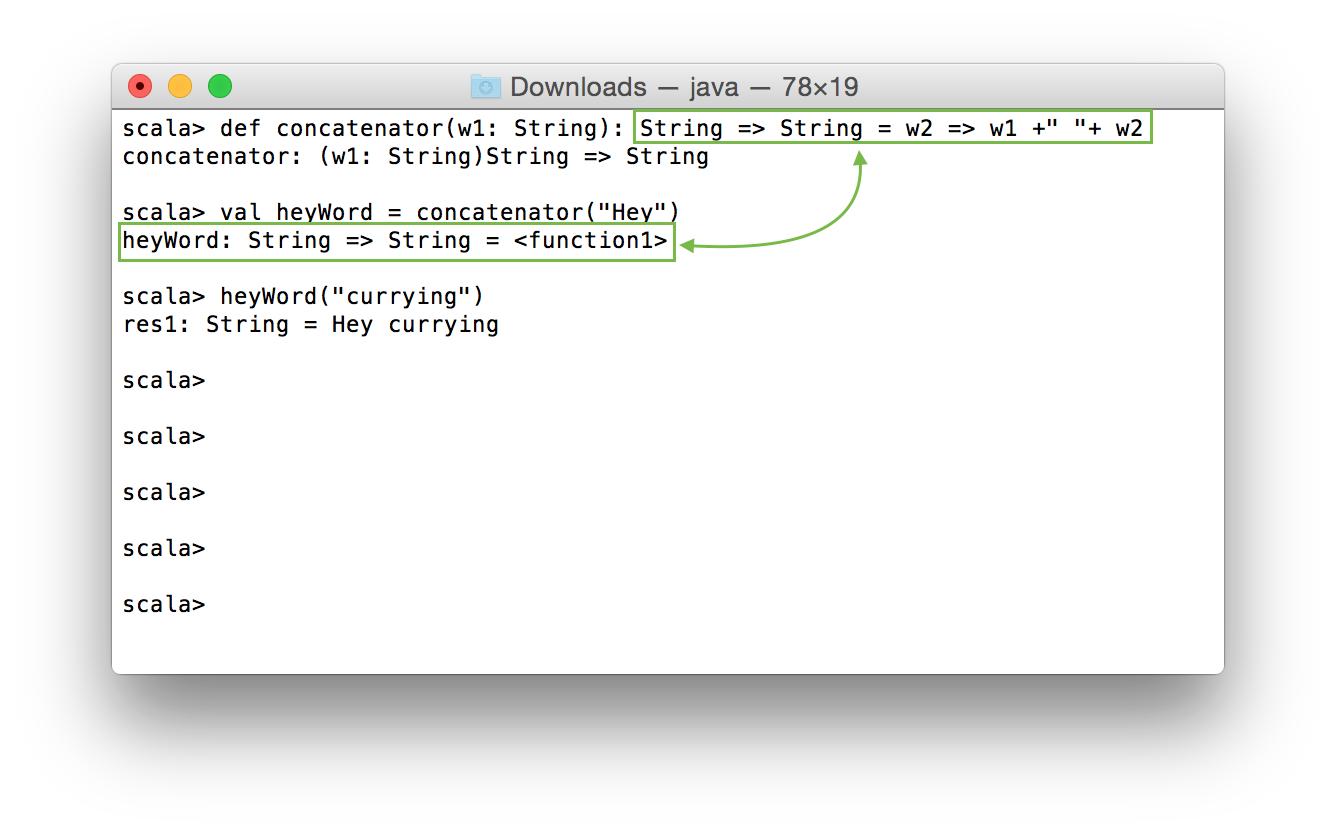
As you see we assigned to heyWord the function. Then we made a call heyWord("currying"). The result of that call is “Hey currying” string.
After this demonstration we can move further. Keep in mind how we used the function which was returned.
Currying time!
Let’s declare a curried function:
def concatenator(w1: String)(w2: String) = w1 + " " + w2
So parameters in the concatenator function defined in a separate brackets. How this circumstance affects the function usage? If we want to call it as a normal function we could pass all arguments in the same time and the result will be:
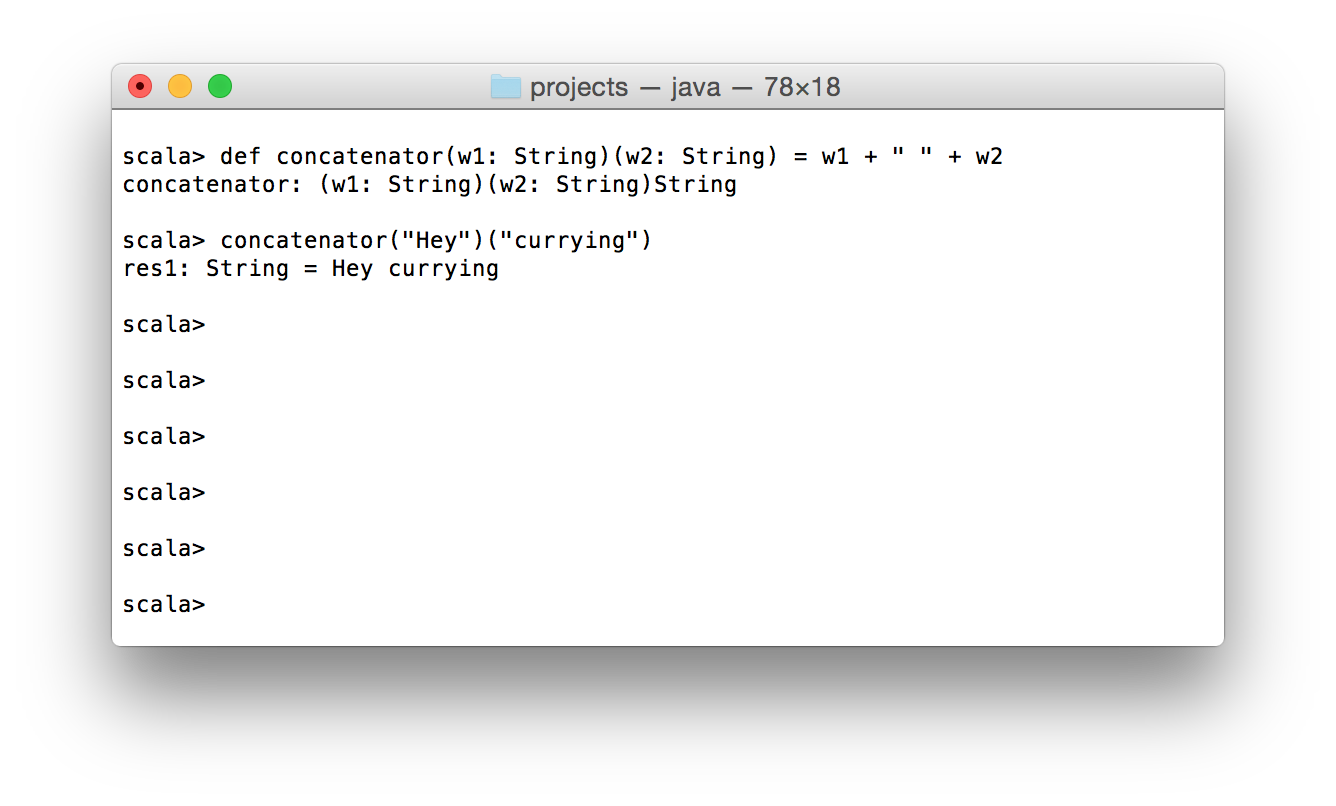
As you see we get expected output Hey currying string. But what if we haven’t all required elements in the moment of first call? In this case we could use underscore or empty curly brackets instead of missed parameters:
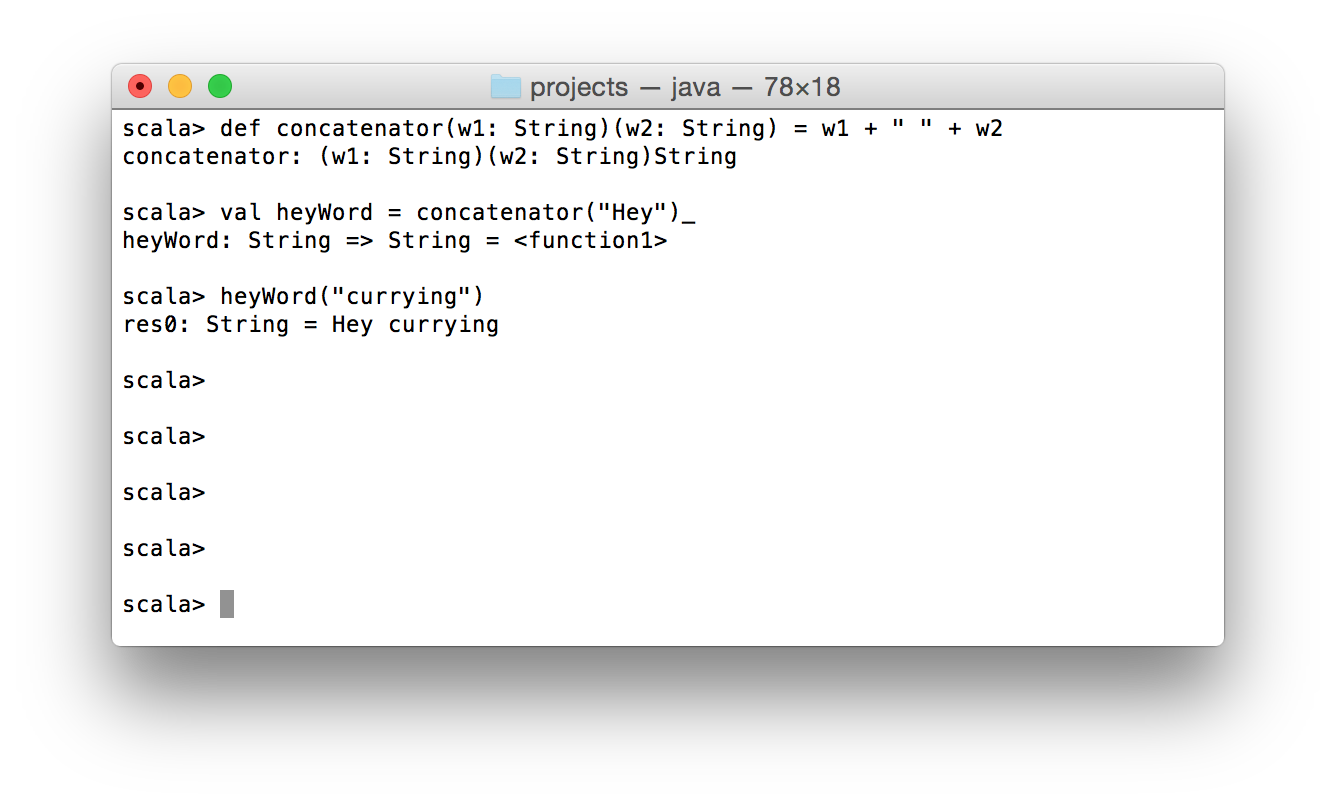
In analogy to the code sample from the first section of this article we use currying for achieving of the same effect. So we assigned the result of the first call to heyWord:
val heyWord = concatenator("Hey")_
And then invoked the heyWord function with currying parameter. I think now currying is more or less clear for you. In order to complete this topic I want to provide another one example of curried function.
More currying
What about a curried function which has more than one parameter per brackets? It’s easy:
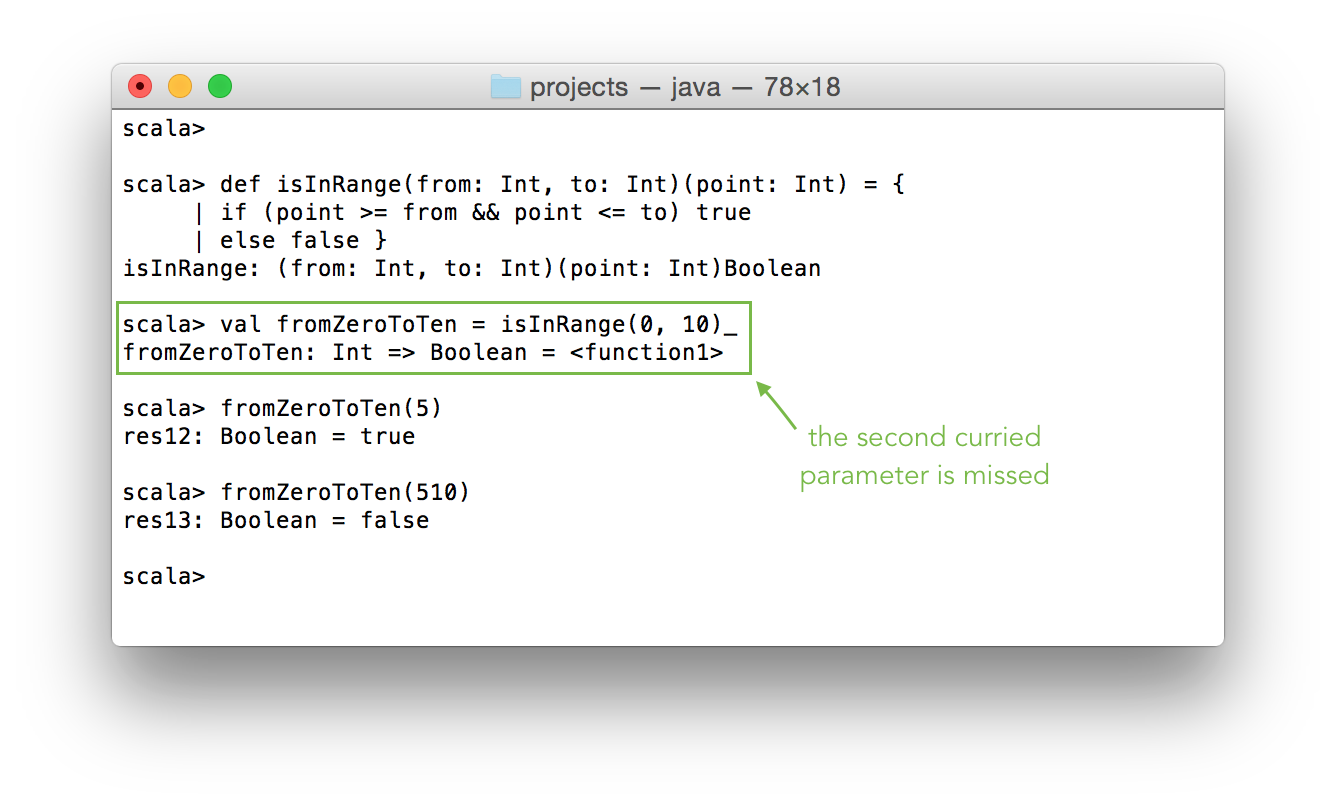
By the way, if you want to specify not first argument primarily you could use following approach:
val isFiveInRange = isInRange(_:Int,_:Int)(5) //isFiveInRange: (Int, Int) => Boolean = <function2> isFiveInRange(0, 10) //true isFiveInRange(-10, 0) //false
Thanks to Luka Jacobowitz for remark to this case.
Summary
Basics of currying is simple if you are interested in learning them. More important aspect of them is a practical usage. In this question I’m not so experienced and I’d like to see your own samples in comments.
The next logical step is to read about recursion functions in Scala.


